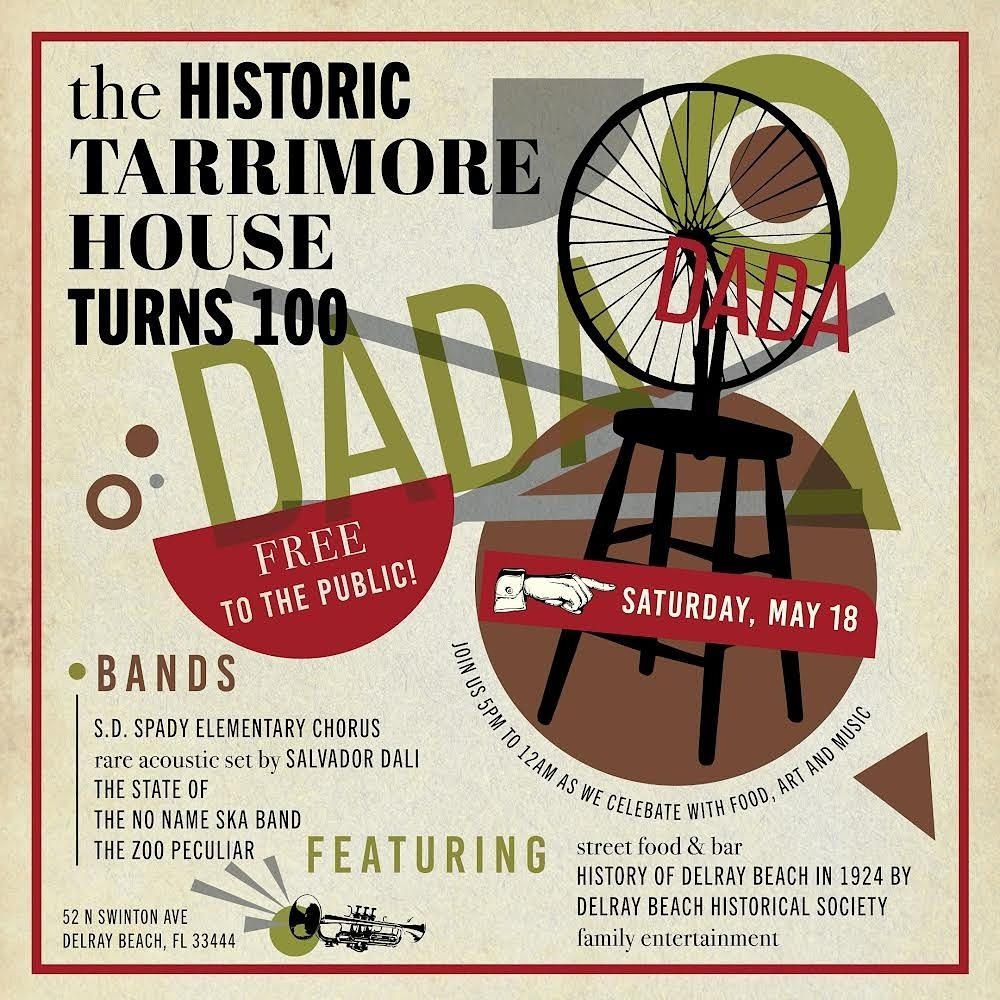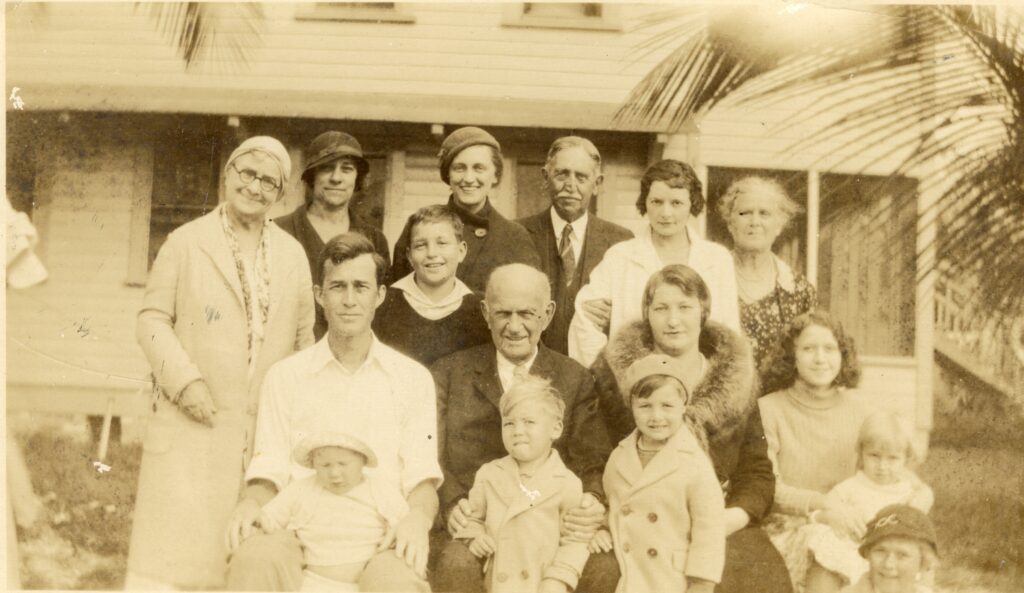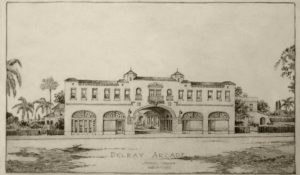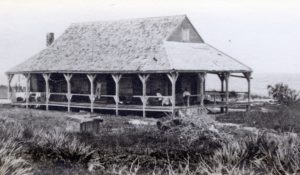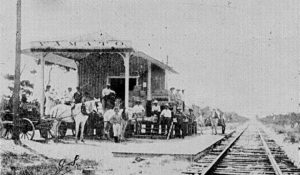By Kayleigh Howald
While many families and individuals proved influential in Delray Beach in its 130-year history, the Cason family are the nearest to our hearts at the Delray Beach Historical Society. Not only do we enjoy Rev. John R. Cason’s handiwork each day by working in Cason Cottage, but we have the unique pleasure of seeing DADA restaurant across the street, formerly Tarrimore and the home of one of Rev. Cason’s sons. To celebrate both structures’ 100th anniversaries, we will explore the history of the Cason family and their impacts on South Florida.

Cason Family
According to genealogical research, the Cason family can trace its American roots to colonial Virginia, where members of the family settled from England in the 1600s. By the 1850s, the family lived in Anson County, North Carolina where patriarch John R. Cason, Sr. was born on December 25, 1853. Following the Civil War, the family moved to Pine Bluff, Arkansas. There, J.R. Cason met Mabel Rebecca Ingram. The Ingrams were also a unique family, as Rebecca’s cousins included Harriet Beecher Stowe, Elizabeth Barrett Browning, and Ralph Waldo Emerson. Her brother, Senator Frederick Hudson became president of the Florida Senate in 1909, wrote Florida’s first child labor laws, and introduced the bill that created Palm Beach County.

The couple married in 1879 and had eight children. The Cason patriarch, matriarch, children, their spouses, and stepchildren were pioneers in medicine, law, politics, education, agriculture, and banking. Their first son, Dr. John R. “Roy” Cason, Jr. (1881-1936) studied medicine at the University of Arkansas, graduating in 1905. He briefly worked as a surgeon for the Arkadelphia Lumber Company before relocating to Delray, Florida. He became the town’s first permanent physician and the only doctor between West Palm Beach and Fort Lauderdale. In approximately 1906, he married Mary Elizabeth Sloan in Arkadelphia, Arkansas. The couple had three children: Roy Sloan Cason, Joanna Rebecca Cason, and Mary Katherine Cason. After serving with the American Red Cross Children’s Bureau in St. Etienne, France during World War I, Dr. Cason was elected mayor and worked to eradicate typhoid and diptheria. According to Evelyn Kaiser Alling, he organized “campaigns to clean up the outhouses and to administer vaccines.” The Casons owned the first private tennis court in Delray – a grass court in their side yard – and the first car: a Reo. Dr. Cason died in August 1936.

Jessie Cason (1883-1961) came to Delray in 1912 after marrying James L. Love. Love became the first pharmacist in Delray and opened Love’s Drugs on Atlantic Avenue. Love was elected mayor in 1924, served as municipal judge, a member of the city council, and postmaster. Her younger sister, Martha Cason (b. 1888) married Dr. John Wilson in a double-ceremony with Jessie. Their father presided over the nuptials.

Roberta Cason (1884-1921) died in childbirth in Miami. Fred Cason (1886-1948) became a lawyer and served as Dade County Attorney. Mary “Maidie” Cason (1889-1945) married J.W. Ives. Together, they founded the first dairy in Florida, just north of Miami. Claribel Cason (1885-1981) was a teacher and principal at Citrus Grove Junior High School in Miami. In 1955, she became the first woman in the City of Miami to be named to the Exchange Club’s Book of Golden Deeds. After retiring from education, she moved back to Delray Beach and into the cottage her father built until 1979. Many locals remember Claribel having bridge parties here on the porch. She was the last Cason to live in Cason Cottage.

Andrew E. “Van” Cason (b.1895) worked in both banking and real estate during the 1920s, as well as a wholesaler of Cities Service gasoline. Van built a cottage across the street from his father’s properties on Swinton Avenue, named “Tarrimore.”

The Casons, Loves and Saunders families all lived close to each other in Delray, with many of the families settling on or near Swinton Avenue. According to a recollection from early Delray resident Elizabeth Benedict Lydiard, there were “very few houses on Swinton Avenue” in the 1920s. “I remember the homes of the Loves, Casons, Scraders, Shabingers, Saunders, Neals, and Sundys,” Lydiard wrote in 1993.
Rev. Cason in Delray Beach
Rev. Cason served as a Methodist minister in Arkansas and Florida for 60 years and helped build multiple churches, including Hyde Park Methodist in Tampa and Trinity Methodist in Miami. In 1921, Rev. Cason retired to Delray Beach to be closer to his children and grandchildren. His retirement, however, was short-lived as Cason quickly became involved in city and county affairs. Rev. Cason served as a municipal judge in Delray Beach from 1927 to 1928 and was a Chairman of the Palm Beach County Board of Public Instruction. He also founded the Methodist Children’s Home in Enterprise, Florida, the first orphanage in the state.

In 1928, Rev. Cason returned to the pulpit. When the 1928 Hurricane hit Palm Beach County, the First Methodist Church’s new building, designed by architect Sam Ogren Sr., was destroyed. Following the devastation, Rev. Cason came out of retirement to lead and rebuild the Methodist Church. He served as its pastor from 1928 to 1930, donating his entire salary to rebuilding and repairing the church. In December 1933 – during the Christmas service and Rev. Cason’s 81st birthday – the church was renamed the Cason Memorial Methodist Church.

Cason Cottage
In 1921, Rev. and Mrs. Cason purchased the land on NE 1st Street and Swinton Avenue. By 1924, they constructed a craftsman style frame cottage. Rev. Cason designed the home to take advantage of ocean breezes, necessary planning in homes before air conditioning. The cottage was constructed using local materials, including Dade County pine weatherboard siding and floors. It also included built-in bookshelves near the fireplace, which are typical of the craftsman style of the 1920s. The sun porch and porte-cochère were added to the cottage in 1928, a gift from the Casons’ adult children for their 50th wedding anniversary. The overall style of the cottage was changed when the porch was added, with a new roofline including decorative details and overhangs that were not on the original cottage. This transformed it from a simple single-gabled house into a quintessential craftsman cottage featuring a triple roof line with gambrel, flat, and gable roofs.
The cottage was one of four buildings originally located on the Casons’ one-acre property. In addition to Cason Cottage, the lot contained another small cottage and two identical apartment buildings designed by Sam Ogren Sr. in 1925.

In 1988, the Delray Beach Historical Society and the City of Delray Beach restored the building and renamed it Cason Cottage in honor of the Reverend and his family. In January 1989, the cottage opened as a historic house museum, transporting visitors back to South Florida in the 1920s and 1930s. The former home now holds the Historical Society’s executive offices and public exhibits.

Tarrimore
In November 1919, youngest son Andrew Evander “Van” Cason, Sr. married Virginia Floding Saunders, a war widow with a young son. Her first husband, George R. Saunders, a trumpeter with the U.S. Marine Corps, died in France in 1918. Virginia and her son, Jack Saunders, moved to Delray from Orlando one year later. By 1924, the couple had a second son: Andrew Evander “Van” Cason, Jr.

While his father was constructing Cason Cottage, Van Cason contracted local architect and builder F.J. Schrader to build a new home for his growing family across the street. A bid by Schrader to build the one-story vernacular style house in June 1923 shows the property was specifically for Mrs. A.E. Cason, indicating she may have been the owner rather than her husband.

Although it is unclear where the name Tarrimore originated, it seemed that both Jack Saunders and Van Cason Jr. had interesting childhoods in the house. Archival photographs of the family show the children posing in front of the house and enjoying pony rides. In 1939, a second story was added to the house and it was remodeled in the California bungalow style that was popular before World War II.

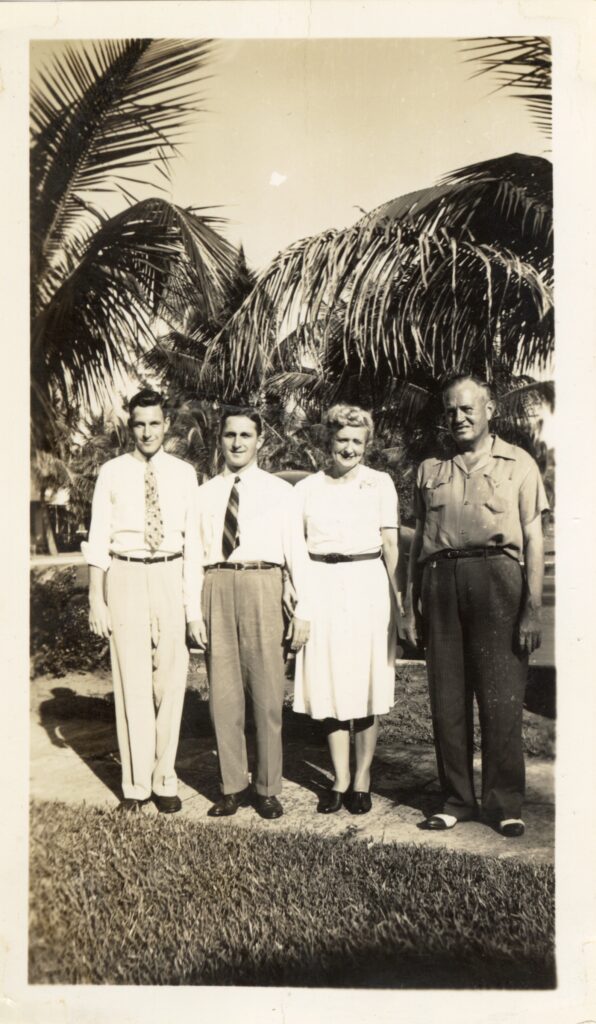
Jack Saunders became thoroughly involved in Delray Beach during his adult life, including several terms as mayor and on the city commission from 1949 to 1974. Saunders was particularly remembered for his stand against selling the municipal golf course in 1957 and his push for a larger water plant. Saunders also used his influence to appoint people of color to city boards, including zoning. Saunders also served in the Pacific Theater during World War II as a Navy lieutenant, was a member of the Kiwanis Club, director of the First Federal Savings and Loan Association in Delray, and operated Cities Service station in the 1950s. In 1980, the Linton Boulevard bridge opened as the Jack L. Saunders bridge in memory of the former mayor, who passed away on November 16, 1978.
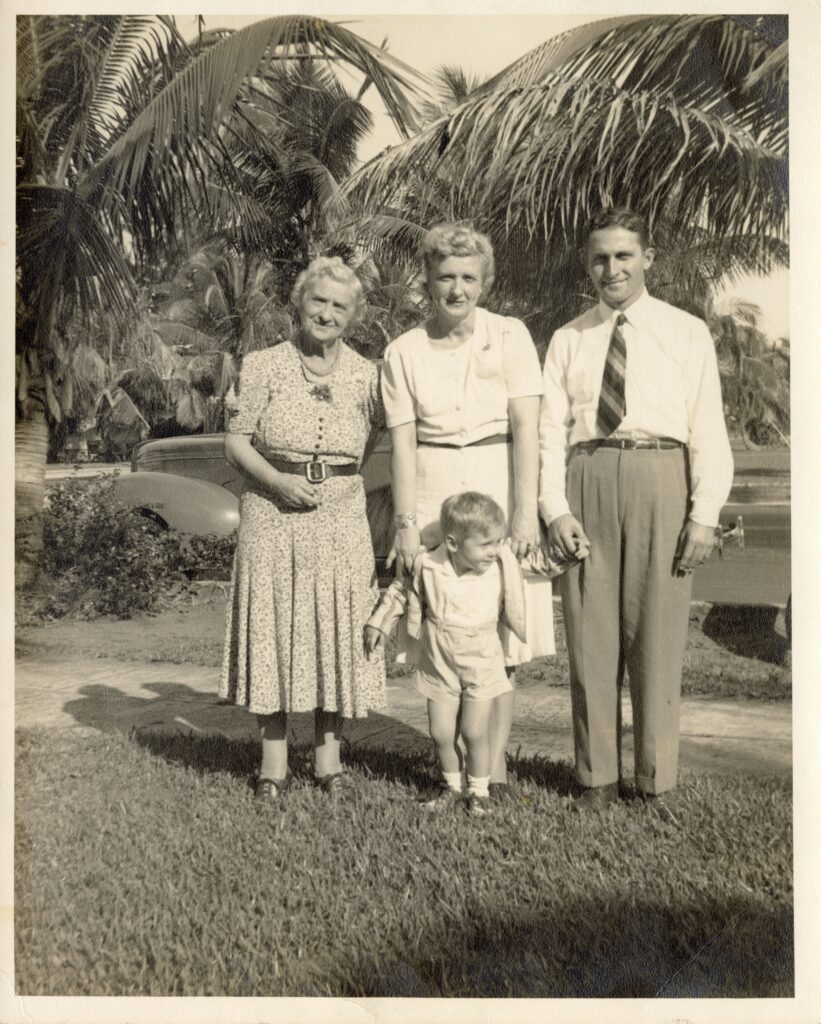
His son, Jack Saunders, Jr. (1939-2018) also lived at Tarrimore with his wife, Brenda Saunders. Saunders Jr. was best known as a writer. In addition to his work writing technical manuals for IBM, Lucent Technologies, and the U.S. Navy, he also wrote poetry and novellas, often about Delray Beach.
The Saunders sold the house in the early 1990s to Diane DeMarco, a contractor from Boca Raton who renovated the home and restored it to much of its original glory. In 1992, Lisa and Anthony Damiano purchased the home to operate it as a restaurant. According to a report in the Sun-Sentinel, the Damianos “adjusted the roof to accommodate the hood of the stove, which was concealed behind the natural gables of the house.” Anthony Damiano, graduate of New York City College, was the executive chef at the Russian Tea Room in New York City, while Lisa Damiano worked as a pastry chef. The couple sold the restaurant 11 years later to Scott Frielich and Rodney Mayo, owners of DADA restaurant and Subculture Restaurant Group.
On May 18th, 2024, DADA is celebrating the 100th anniversary of Tarrimore with a celebration event, complete with street food, live music, and an exhibition of photographs depicting Delray Beach during the 1920s straight from the Delray Beach Historical Society Archives! We hope you’ll join us in celebrating not only the incredible legacy of the Casons, but the legacy of preservation in Delray Beach.
